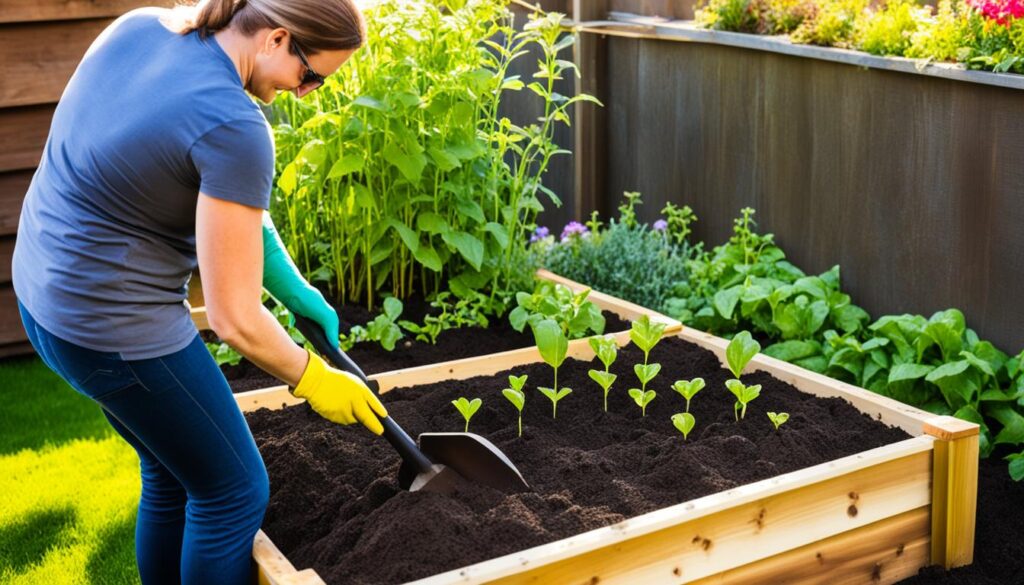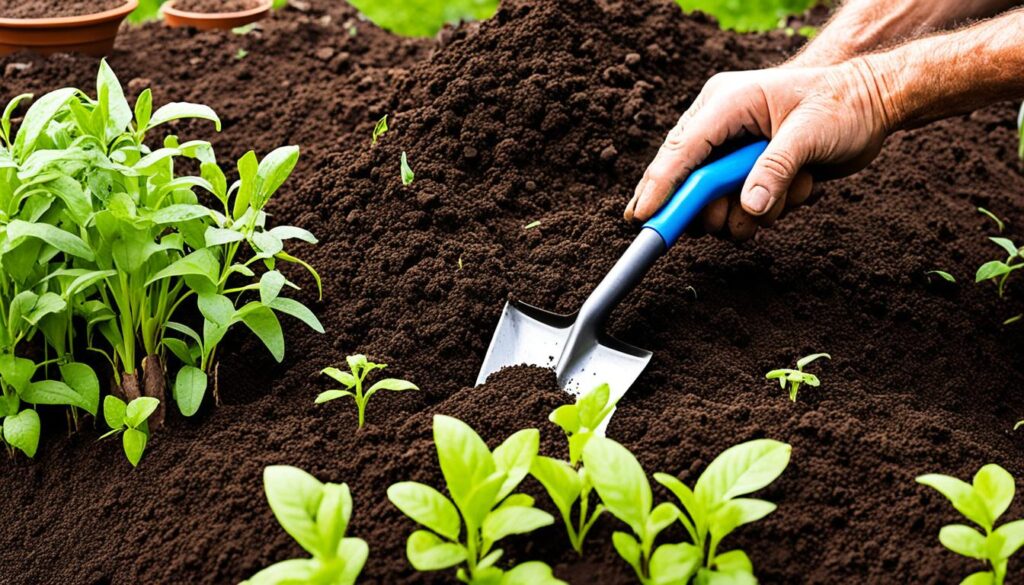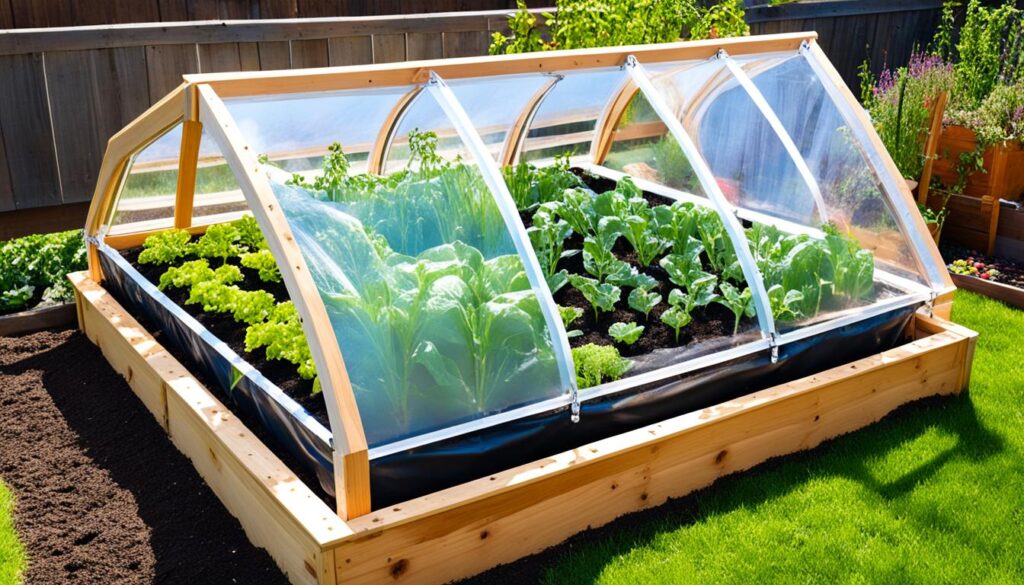Are you wondering why you should split hostas in your garden? Well, the benefits of dividing these beautiful perennials are manifold. Not only does it allow you to propagate new plants, but it also helps maintain the size and shape of your existing ones while promoting healthier growth. Plus, by splitting hostas properly, you can create more plants to enhance your shade garden and enjoy the lush foliage that these perennials offer. So, if you want to learn more about how to divide hostas, when the best time is to separate them, and tips for proper hosta division, read on!
Key Takeaways
- Dividing hostas allows you to propagate new plants and maintain the size and shape of your existing ones.
- The best time to divide hostas is in spring or fall, with specific steps to follow for successful division.
- Dividing hostas every four or five years encourages vigorous growth, prevents overcrowding, and rejuvenates the plants.
- Proper hosta plant care techniques, including regular watering and suitable habitat creation, contribute to their overall health.
- Strategies like growing strong and healthy plants, using natural slug deterrents, and spring mulching can help keep your hostas thriving.
When is the Best Time to Divide Hostas?
The optimal times to divide hostas are in spring, as new growth emerges, or in fall as growth begins to slow down. In spring, the division can be done from the time you first spot their “eyes” popping up through the soil until the leaves begin to unfurl. This gives you approximately a month to divide your hostas. In fall, it is recommended to wait until night temperatures have cooled but while there is still time for divisions to grow new roots before freezing weather sets in. September is usually the best time in cooler climates, while October is suitable for dividing hostas in warmer zones.
How to Divide Hostas Properly
Dividing hostas is a fundamental practice for maintaining healthy plants and expanding your garden. To ensure a successful division, follow these simple steps:
-
Water thoroughly: Before dividing the hosta, water it well to reduce stress on the plant and make digging easier.
-
Dig up the clump: Carefully dig around and beneath the clump, ensuring you don’t damage the roots. Lift the entire clump from the ground.
-
Clean excess soil: Remove excess soil from the roots, providing a clear view of the plant’s structure and allowing for easier division.
-
Divide into sections: Cut the clump into smaller sections, making sure each section contains at least one eye (the bud from which new growth will emerge).
-
Soak the divisions: Clean the divisions by removing any dead or decaying foliage. Then, soak them in a bucket of water to hydrate the roots before planting.
-
Prepare the planting holes: Dig holes in the desired location with good drainage. The size of the holes should accommodate the divisions, allowing enough space for the roots to grow.
-
Plant the divisions: Place each division in its prepared hole, making sure the roots are well-spread and not cramped. Position the divisions at the same depth they were planted initially.
-
Backfill and water: Gently backfill the holes with soil, ensuring there are no air pockets around the roots. Water the divisions thoroughly to settle the soil and eliminate any remaining air pockets.
-
Provide regular watering: For divisions done in spring, continue to water them regularly until they become established. This is crucial for their initial growth and development.
Following these hosta division tips will help you propagate new plants, maintain the health and shape of your existing hostas, and create a more vibrant and beautiful shade garden.

Benefits of Dividing Hostas
Dividing hostas is a practice that brings numerous benefits for both the plants and the gardener. By regularly dividing them every four or five years, you can ensure vigorous and healthy growth, prevent overcrowding, and maintain the desired size of your hostas. This division process also offers opportunities to propagate new hostas, creating more beautiful plants for other areas of your garden or to share with fellow gardening enthusiasts.
One of the significant advantages of dividing hostas is the rejuvenation it provides. Over time, hostas may develop dead or declining portions, impacting their overall appearance. Dividing allows you to remove these unhealthy parts and promote fresh, healthy growth.
Now, let’s take a look at the benefits of dividing hostas in more detail:
- Encourages Vigorous Growth: Dividing hostas stimulates new growth and increases their overall vitality. It allows the plants to allocate resources more efficiently, leading to robust foliage and stronger root systems.
- Prevents Overcrowding: Hostas have a tendency to multiply and gradually form large clumps. Dividing them prevents overcrowding, ensuring each plant has enough space to thrive and receive adequate nutrients and sunlight.
- Maintains Desired Size: Hostas come in various sizes, and dividing them helps to control their growth. By dividing larger clumps into smaller sections, you can maintain the size and shape you desire for your garden.
- Propagation Opportunities: Dividing hostas provides an excellent opportunity to create more plants. Each divided section can be re-planted, giving you additional hostas to enhance different areas of your garden or share with gardening friends and neighbors.
| The Benefits of Dividing Hostas | Benefits |
|---|---|
| Encourages Vigorous Growth | Promotes robust foliage and stronger root systems |
| Prevents Overcrowding | Ensures each plant has enough space to thrive |
| Maintains Desired Size | Control the growth of hostas to fit your garden |
| Propagation Opportunities | Create more plants to enhance your garden or share with others |
Dividing hostas is an essential practice to incorporate into your hosta plant care techniques. Not only does it benefit the plants themselves, but it also provides you with the opportunity to expand your garden and share the beauty of hostas with others.

Step-by-Step Guide to Splitting Hostas
Splitting hostas can be a rewarding and simple process when done correctly. By following these step-by-step instructions, you can divide your hostas and create new plants to enhance your garden. Here’s what you’ll need:
- Secateurs
- Sharp knife
- Multi-purpose, peat-free compost
- Grit
- Pots
Now, let’s get started:
- Water the hosta: Start by thoroughly watering the hosta a day or two before dividing. This will help reduce stress on the plant.
- Dig up the clump: Carefully dig up the entire hosta clump, making sure to dig around and beneath the roots. Be gentle to avoid damaging the roots.
- Divide the clump: Using a sharp knife or secateurs, cut the clump into smaller sections. Each section should have one or more pointed buds and plenty of roots.
- Pot up the divisions: Prepare a mixture of compost and grit in a pot. Make sure the roots of each division are well-firmed and place them in the prepared pots. Water the divisions to settle the soil and eliminate air pockets.
- Provide proper care: Place the pots in a sheltered position with indirect sunlight. Water the divisions regularly and keep the soil moist, but not waterlogged. Monitor their growth and ensure they receive adequate water and care until they become established.
This step-by-step process will help you successfully split your hostas and promote healthy growth. Enjoy watching your hostas thrive and create a stunning display in your garden!

Proper Hosta Plant Care Techniques
Proper hosta plant care techniques are crucial to ensure the overall health and optimal growth of these beautiful perennials. In addition to dividing the plants, it is important to provide adequate water, especially during dry periods when there hasn’t been recent rainfall. Hostas thrive in shade, so when selecting a planting site, choose a shady area with good drainage to create a suitable environment for them to flourish.
Preparing the soil is essential for successful hosta plant care. Incorporate compost into the soil before planting to enhance its fertility and ensure adequate nutrient availability for the plants. Additionally, make sure that the planting holes are large enough to accommodate the entire root system of the hosta, allowing it to establish itself without restriction.
To maintain the health of your hostas, regular watering is crucial, especially for plants that have been divided in spring. Keep the soil evenly moist but not waterlogged to prevent root rot and other moisture-related issues. Watering deeply and infrequently is generally more effective than shallow, frequent watering, as it encourages deeper root growth.
To create a harmonious garden ecosystem and deter common pests like slugs and snails, it is beneficial to provide a suitable habitat for beneficial creatures. These include frogs, toads, hedgehogs, and birds, which help keep the slug population under control. Encouraging biodiversity in your garden can contribute to the overall well-being of your hostas.
Summary:
In addition to dividing hostas, proper care techniques such as providing adequate water, selecting a shady planting site with good drainage, preparing the soil with compost, and creating a suitable habitat for beneficial creatures are all essential for the well-being and optimal growth of hostas.
| Technique | Benefits |
|---|---|
| Provide adequate water | Prevents drought stress and promotes healthy growth |
| Select a shady site with good drainage | Creates an ideal environment for hostas to thrive |
| Prepare the soil with compost | Enhances soil fertility and nutrient availability |
| Water regularly | Maintains proper moisture levels for hosta growth |
| Provide a habitat for beneficial creatures | Controls common pests like slugs and snails |
How Often Should Hostas be Divided?
Unlike some perennials, hostas can go for years without being divided, as they continue to grow larger. However, dividing hostas every four or five years is recommended to encourage vigorous growth and prevent overcrowding. Dividing hostas at the appropriate time promotes their overall health and ensures that they continue to thrive in your garden.
Dividing Hostas in Pots
When it comes to dividing hostas in pots, the best time is the same as for dividing in-ground hostas. Spring and fall are the recommended seasons for splitting hostas, including those that are grown in container gardens. By following the same techniques and steps mentioned earlier for dividing hostas in the ground, you can successfully divide hostas that are grown in pots and continue to enjoy their beauty in different areas of your garden.
| Season | Advantages | Disadvantages |
|---|---|---|
| Spring | Hostas have plenty of time to establish their roots before the heat of summer | Requires more vigilance in watering to prevent drying out during the summer months |
| Fall | Hostas have a longer period to establish their roots before the harsh winter conditions | Pots may be prone to freezing and cracking during winter |
Regardless of the season, it’s important to ensure that your hostas have enough space in their pots to grow and thrive. Choose a pot that is at least twice the size of the hosta’s root ball to accommodate its growth. Provide well-draining potting soil and water regularly to keep the plants healthy.
The best time for dividing hostas in pots is the same as for dividing in-ground hostas. Spring and fall are the recommended seasons for dividing hostas, including those in container gardens.
Keeping Slugs off Hostas
Slugs can be a pesky problem for hostas, but with the right techniques, you can protect your plants and keep them looking their best. Here are some strategies to keep those slimy pests at bay:
- Grow strong and healthy plants: Healthy hostas are more resistant to slugs’ attacks. By providing optimal growing conditions, such as proper watering, adequate shade, and nutritious soil, you can boost your hostas’ natural defenses.
- Use sacrificial comfrey leaves: Slugs are attracted to comfrey leaves, so by placing these sacrificial leaves near your hostas, you can lure the slugs away from your precious plants.
- Mulch with grit or bran: Creating a barrier with coarse materials like grit or bran around your hostas can make it difficult for slugs to reach the plants. Slugs tend to avoid crossing such rough surfaces.
- Create beer traps: Slugs are attracted to beer, so by placing shallow dishes filled with beer near your hostas, the slugs will be lured into the traps and drown.
- Use copper barriers: Slugs dislike crawling over copper surfaces. You can create a barrier around your hostas by placing copper tape, copper wire, or copper bands at the base of the plants or on raised beds.
- Create a suitable habitat for natural slug predators: Encouraging natural slug predators like toads, frogs, hedgehogs, and birds can help keep the slug population under control. Provide suitable habitats by keeping your garden diverse and incorporating features like ponds, log piles, and bird feeders.
By implementing these strategies, you can effectively protect your hostas from slugs and ensure they thrive in your garden.
| Technique | Effectiveness |
|---|---|
| Grow strong and healthy plants | ✅✅✅ |
| Use sacrificial comfrey leaves | ✅✅ |
| Mulch with grit or bran | ✅✅ |
| Create beer traps | ✅✅✅ |
| Use copper barriers | ✅✅✅ |
| Create a suitable habitat for natural slug predators | ✅✅✅ |
Spring Mulching for Hostas
Spring is the perfect time to mulch your beds and borders, especially areas where you have hostas planted. Mulching with a generous layer of organic matter offers numerous benefits for your hostas and the overall health of your garden. Not only does mulching help deter weed growth, but it also retains vital moisture in the soil, ensuring your hostas stay hydrated during the warmer months.
When mulching in the spring, it’s advisable to do so before the growth of your hostas becomes too vigorous. This timing provides easier access to your garden borders, allowing you to apply the mulch without risking damage to emerging plant shoots. By mulching early in the season, you create a protective layer that helps regulate soil temperature, reducing stress on your hostas and promoting healthy growth.
By incorporating mulching into your hosta plant care techniques, you provide them with the necessary nourishment and protection they need to flourish. The organic matter used in mulching not only enriches the soil but also serves as a natural source of nutrients as it decomposes. Furthermore, mulching aids in suppressing weed growth, reducing competition for resources and maximizing the overall beauty of your hostas.








